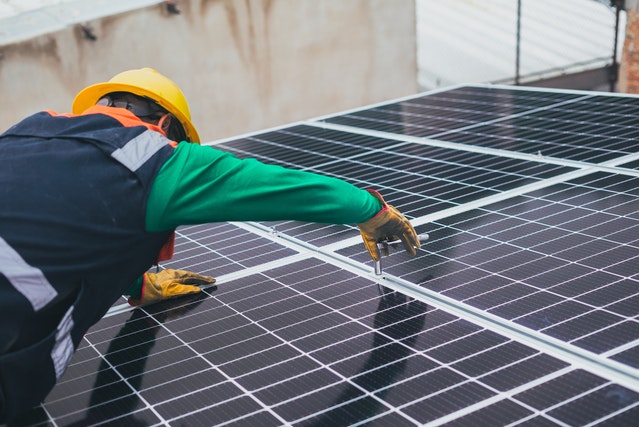
Shared solar programs have become increasingly common in recent years. They offer many of the same benefits as traditional solar panel installations, such as a reduced dependency on utility power and lower energy expenses. By participating in a shared solar program, though, homeowners won’t need to install solar panels. Instead, they can draw from the power generated by a communal solar panel installation.
The Basics of Shared Solar Programs
Also known as a community solar program, a shared solar program is a voluntary program in which homeowners share the solar power generated by a single solar panel installation. The solar panel installation will generate power by converting sunlight into energy. Participants of the shared solar program will then receive a portion of the generated solar power.
While structured in different ways, most shared solar programs require participants to buy or lease some of the solar power installation. If you want to draw from the solar power installation, for instance, you’ll need to pay for your piece of the solar pie. The provider of the shared solar panel will sell “placemnets” to homeowners.
You will then receive a bill credit towards your monthly electric bills. The amount of the bill credit will vary depending on how much of the solar panel installation you purchased or leased, the amount of power generated by the solar panel installation, and the rates set by the provider of the shared solar program.
Advantages of Participating in a Shared Solar Program
Shared solar programs eliminate the need for individual rooftop or ground-mounted solar panel installations. You can tap into the power of solar without installing solar panels on or around your home; you just need to participate in a shared solar program.
There are shared solar programs available in many states. According to the U.S. Department of Energy (DOE), about one-third of all states have policies that allow for shared solar programs. As more states adopt shared solar programs, it will only become more accessible to homeowners.
Aside from saving money on energy expenses, you can typically continue using a shared solar program if you move into a new home. You may sign up for a shared solar program at your existing home, for instance. And if you move to a different home in a different area, you can continue to use the shared solar program. These are just a few of the advantages of participating in a shared solar program.

